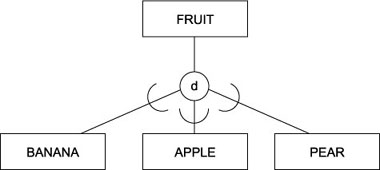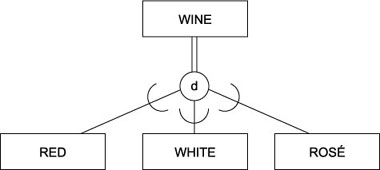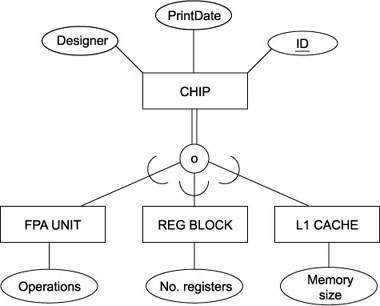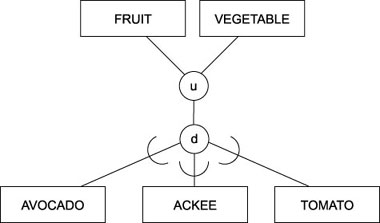3.4. Type Inheritance and EER diagrams
In this lecture we look at...
[Section notes PDF 117Kb]
3.4.01. Introduction
- Design/schema side (Entity types)
- Object-orientated concepts
- Java, C++ or UML
- Sub/superclasses and inheritance
- EER diagrams
- EER to Relational mapping
3.4.02. OO
- Inheritance concept
- Attributes (and methods)
- Subtypes and supertypes
- Specialisation and Generalisation
- ER diagrams
- show entities/entity sets
- EER diagrams
- show type inheritance
- additional 8th step to ER→Relational mapping
3.4.03. Objects
- Basic guide to Java
- Object, classes as blueprints
- Object, collection of methods and attributes
- Miniworld model of real world things
- Object, entity in database terms
3.4.04. Abstract
- Similar objects
- Car Park example
- Student example
- Shared properties/attributes
- Generalisation
- Reverse, specialisation
3.4.05. Relationships
- Using English as model
- ‘Is a’ (inheritance)
- ‘Has a’ (containment)
- Nouns as objects
- Verbs as methods
- Adjectives as variables (sort of)
3.4.06. Classes
- Superclasses (Student)
- Subclasses (Engineer, Geographer, Medic)
- Inheritance
- Subclass inherits superclass attributes
- Union of specific/local and general attributes
- Inheritance chains
- Person → Student → Engineer → Computer Scientist
3.4.07. EER Fruit example
3.4.08. EER Wine example
3.4.09. More extended (EER)
- Specialisation lattices
- and Hierarchies
- Multiple inheritance
- Union of two superclasses (u in circle)
- In addition to basic ER notation
3.4.10. EER diagramatic notation
- Subset symbol to illustrate
- sub/superclass relationship
- direction of relationship
- Circle to link super to subclasses
- Disjoint
- Overlapping
- Union
3.4.11. Disjointness constraint
- Disjointness (d in circle) – single honours
- Overlapping (o in circle) – joint honours/sports
- Membership condition on same attribute
- attribute-defined specialisation
- defining attribute
- implies disjointness
- versus user-defined
- each entity type specifically defined by user
3.4.12. Completeness constraint
- Total specialisation
- Every entity in the superclass must be a member of atleast 1 subclass
- Double line (as ER)
- Partial specialisation
- Some entites may belong to atleast 1 subclass, or none at all
- Single line
- Yields 4 possibilities
- (Total-Dis, Total-Over, Partial-Dis, Partial-Over)
3.4.13. EER Chip example
3.4.14. EER Multiple inheritance
3.4.15. EER to Relational Mapping
- Initially following 7 ER stages
- Stage 8
- 4 different options
- Optimal solution based on problem
- Let C be superclass, S1..m subclasses
3.4.16. Stage 8
- Create relation for C, and relations for S1..m each with a foreign key to C (primary key)
- Create relations for S1..m each including all attributes of C and its primary key
3.4.17. Stage 8
- Create a single relation including all attributes of C ∪ S1..m and a type/discriminating attribute
- only for disjoint subclasses
- Create a single relation as above, but include a boolean type flag for each subclass
- works for overlapping, and also disjoint



